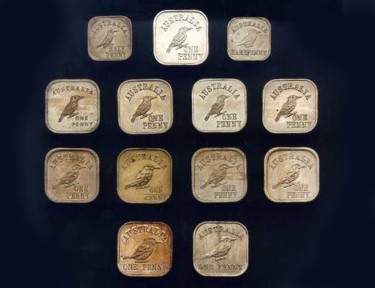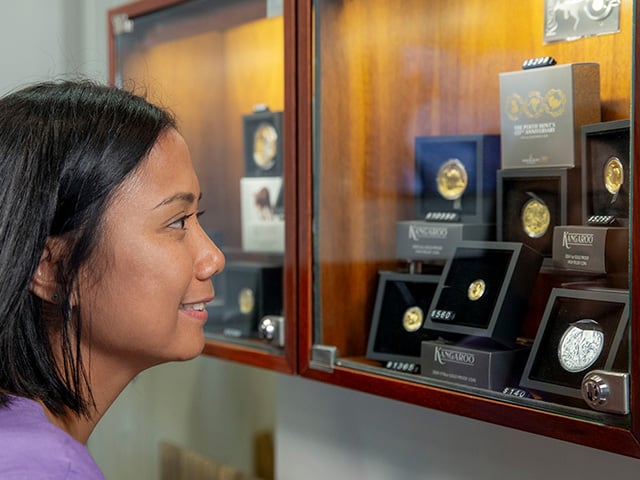Why the kookaburra pattern are so interesting
The pattern kookaburra pennies and halfpennies were produced between 1919 and 1921 as part of a move towards a smaller and thus more cost effective national coinage.
The kookaburra pennies were far smaller than the coins seen in circulation, and were made of a variety of metals – primarily various alloys of nickel, copper/nickel, tin and copper.
This move to an improved circulating coinage obviously did not succeed, and as a result the kookaburra pennies and halfpenny patterns that remain in existence are highly prized by collectors and historians.
When considering what historical importance these coins have, we can see how they are a tangible reminder of the enormous changes brought upon the international monetary system by the financial consequences of World War I.
In my mind, the kookaburra pennies were part of a raft of proposed changes to the Australian monetary system away from the bimetallic standard to a legal tender/fiat currency.
Other proposed changes to our coinage between 1918 and 1921 included a reduction in the silver content of the larger denominations (3d – 2/-) and the proposed introduction of a paper five-shilling note.
Although none of these efforts came to pass, coins such as the kookaburra patterns do make for interesting study.
The exact number of these coins that exist is not known – Royal Mint records from the period do not indicate how many were produced, and so numismatists are left to guess just how many are still around.
Coin issuing authorities, both now and in the past, consult with coin vending machine manufacturers over the suitability of new coin issues. The mechanical restrictions imposed by coin vending machines in the early decades of the 20th century effectively killed-off a revolutionary idea to replace the heavy round pennies and halfpennies in the early 1920’s.
The project is believed to have been the ‘brainchild’ of the then Treasurer, Mr Watt, who suggested the kookaburra design. Struck in lighter, hard-wearing cupro-nickel, the coins were to be square in shape to avoid confusion with sixpenny and threepenny pieces.
This innovation proved to be their undoing, as coin vending machine operators successfully argued that the coins were impractical by demonstrating just how easily they jammed in the coin acceptor mechanism. The harder nickel alloy proved difficult to work with in striking the coins and there was a greater cost in importing nickel compared to the cost of locally produced metals.
Between 1919 and 1921, several hundred trial coins were distributed to officers of the Treasury, Parliamentarians and selected members of the public to gauge their reaction.
The coins were struck at the Melbourne and London mints, with the task of designing the coins being shared by Stokes and Son, Sir Bertram MacKennal (the London issues) and Douglas Richardson. All but one design shows King George V without his familiar crown. All the reverses show a kookaburra perched on a branch.
Different designs can be distinguished by the length of the branch and its relationship to the wording ‘One Penny’ or ‘Half Penny’. On some of the two-line designs (stating the denomination) the branch appears to be hovering over the ‘H’ of ‘Half’ or the ‘O’ of ‘One’. On others, the branch appears alongside the wording. Other designs have the words of the denomination on the one line. The kookaburra changes from design to design. On some he appears to be pitifully undernourished, while on others he is quite plump.
The square penny was a contentious issue at the time, with a huge volume of correspondence occurring between the Treasury and the Royal Mint over the acceptability of using an uncrowned portrait of the King. The mint eventually experimented with a crowned portrait in 1920 (Type 10).
Despite the controversy, the King did approve the uncrowned portrait and by February, 1921, the Royal Mint had prepared and despatched master dies to Melbourne. However, with the resignation of Watt as Treasurer, the incoming Minister showed little interest in continuing the project.
Consequently, the Treasury did nothing to further the necessary Government regulations to authorise the Mint to proceed. The Kookaburra pattern series ended, unissued, in 1921.
(First published by Andrew Crellin on Sterling and Currency.)














